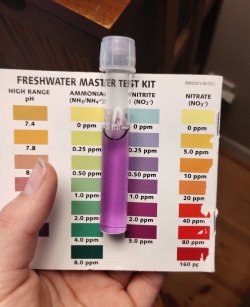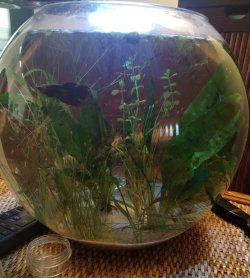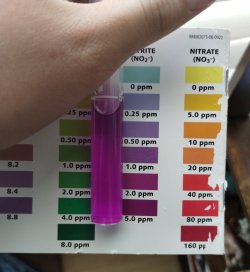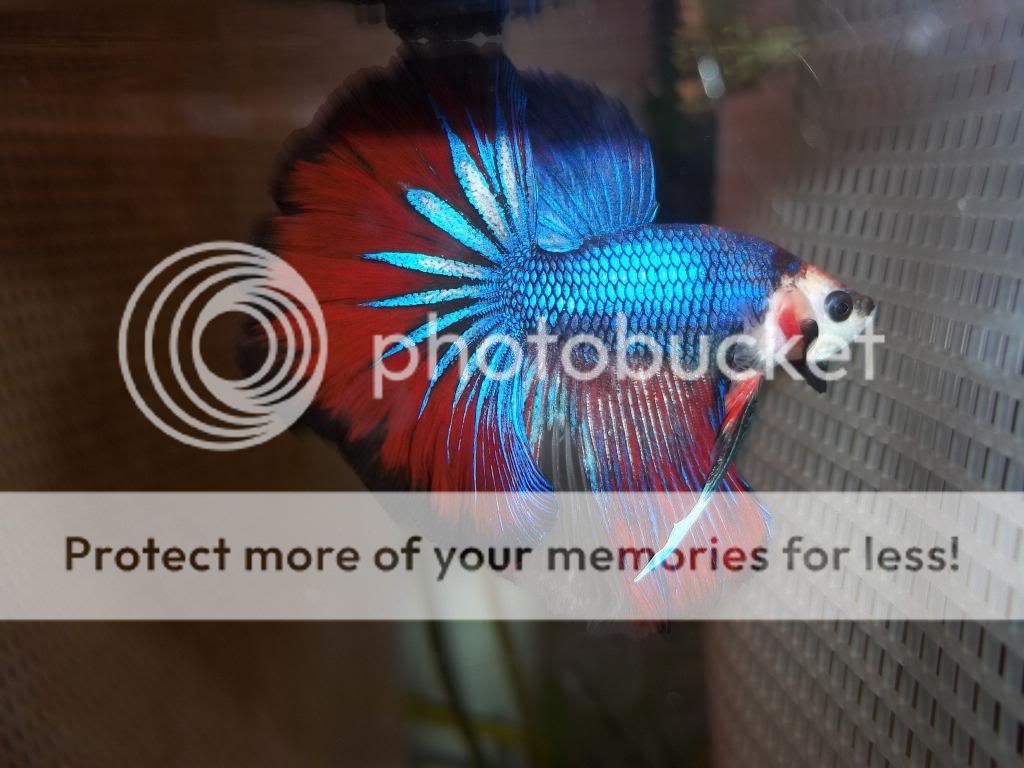BettaFishGirl
Fishaholic
Thank you. Before I could read this I did a 75% WC on the bowl and one gallon tank with bottled spring water, waited a few hours and tested. They read just below .25 ppm. My 5 gallon is the same though I didn't do a WC, but added Tetra SafeStart and the nitrite has gone down significantly.Salt blocks nitrite from getting into the blood of fish. For larger size tanks there is a formula for how much salt it takes to counteract any given concentration (ppm) if nitrite in any given size tank. But your tanks are very small, so I would suggest just a pinch of salt should be enough and should not bother any of the inhabitants.
Just for your own education about this, I suggest you read the section on SOME FACTS ABOUT NITRITE in the cycling section here in the paper in the link below. You do not need to figure all the stuff in out because all you need in such small tanks and for such low nitrite readings is a very small amount of salt. https://www.fishforums.net/threads/rescuing-a-fish-in-cycle-gone-wild-part-il.433778/
I know you are not cycling with fish- but nitrite is nitrite no matter how or when it appears. And salt will stop it from harming fish until you get the bacteria working to handle nitrite.
A pinch means a very small amount of salt whicch you can hold between your thumb and a finger - sort of like how you would pinch something. Take a bit of water out of the container with the fish and put it into a clean small glass container and stir it. Then pour that liquid back into the contrainer with the fish. Do not pour it all into one spot. Spread it around the surface as you pour it.
Salt does not evaporate. So the way to remove it from the water is via water changes. They dilute the salt until it is gone.
I have aquarium salt and kosher salt, which should I use? I also have a snails, neo and ghost shrimp in the 5 gallon, and I know shrimp can be very sensitive to salt, will the salt affect them?
You say a pinch of salt for my tanks, is that for the 1 gallon, the 1.7 gallon bowl, and the 5 gallon? Or should I add one pinch to the bowl and 1g and 2 or 3 pinches to the 5g?
This is helping me a lot!!!







